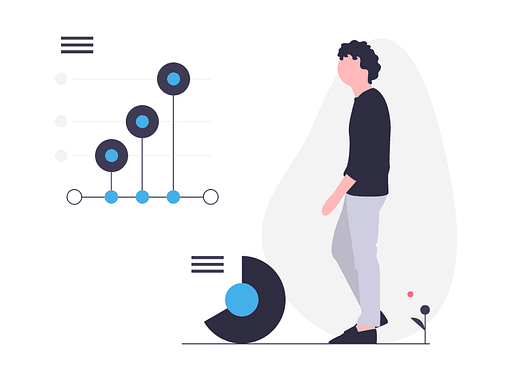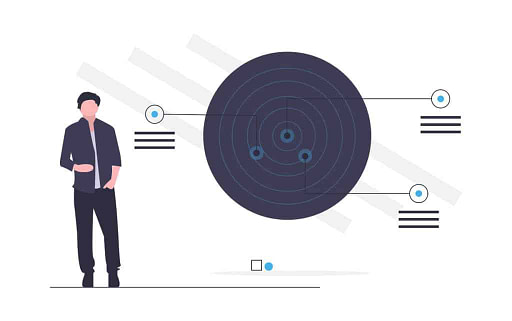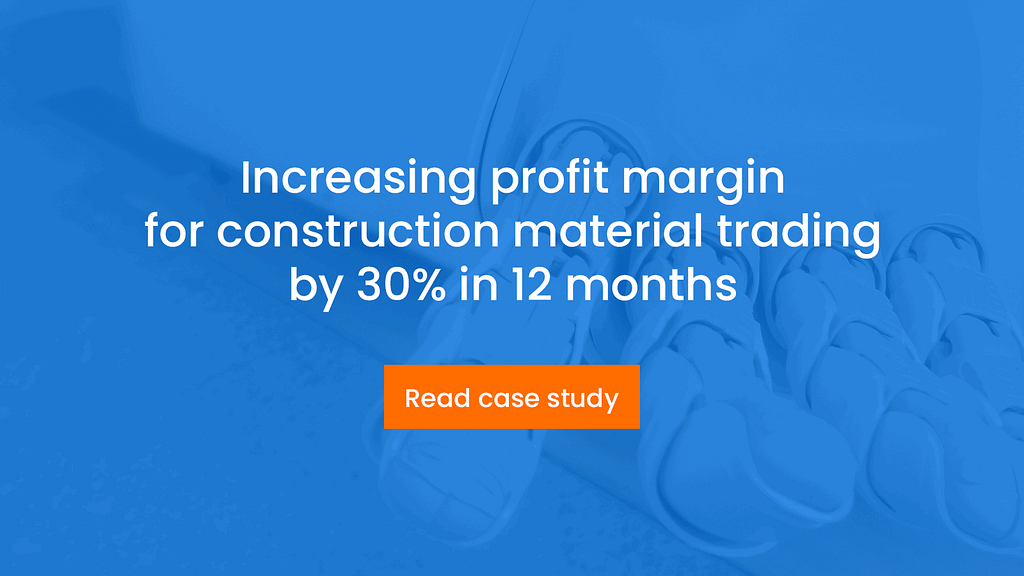The Manufacturer’s Annual Manufacturing Report 2018 found that 92% of senior manufacturing executives believe that “Smart Factory” digital technologies, including AI, will enable them to increase their productivity and empower staff to work smarter. However, there is a significant gap between ambition and execution: Forrester says that 58% of business and technology professionals are researching AI solutions but only 12% are actively using them.
How is AI impacting the manufacturing industry?
Accenture and Frontier Economics estimate that by 2035, AI-powered technologies could increase labor productivity by up to 40% across 16 industries, including manufacturing. In the same paper, the authors claim that AI could add an additional 3.8 trillion dollars GVA in 2035 to the manufacturing sector, which is an increase of almost 45% compared to business as usual.
Andrew Ng, the co-founder of Google Brain and Coursera, says:
AI will perform manufacturing, quality control, shorten design time, and reduce materials waste, improve production reuse, perform predictive maintenance, and more.
And he’s correct. AI is already transforming manufacturing in many ways. Let’s have a look at some of the use cases of AI development services for manufacturers.
Read also: AI in business
Use cases of AI in manufacturing
Quality checks
Some flaws in products are too small to be noticed with the naked eye, even if the inspector is very experienced. However, machines can be equipped with cameras many times more sensitive than our eyes – and thanks to that, detect even the smallest defects. Machine vision allows machines to “see” the products on the production line and spot any imperfections. The logical next step might be sending the pictures of said flaws to a human expert – but it’s not a must anymore, the process can be fully automated. Landing.ai, a company founded by Andrew Ng, offers an automated visual inspection tool to find even microscopic flaws in products. The system recognizes defects, marks them, and sends alerts.
Prediction of failure modes
Do you know the story about Abraham Wald and the missing bullet holes? And it’s a true story, may I remind you. Abraham Wald was a brilliant statistician. During World War II, he was asked by the Royal Air Force to help them decide where to add armor to their bombers. You don’t want your planes to be shot down, and neither adding too little armor nor adding too much of it works. The British analyzed the bombers that returned to Britain and found that most damage was done around the fuselage area of the bomber. Using simple reasoning, they should reinforce this part of the plane, right? They should not. The sample didn’t include the bombers that never made it home. And Wald was only looking for the “missing holes” – those around the engine. If a plane was shot there, it never came back. And the damage around the fuselage still didn’t stop the planes from returning to Britain. That’s were survival bias happens – we select some data to take into consideration and overlook other, often due to lack of its visibility. This can lead to false conclusions.
We can make false conclusions considering products and processes, too. Products can fail in a variety of ways, irrespective of the visual inspection. A product that looks perfect may still break down soon after its first use. Similarly, a product that looks flawed may still do its job perfectly well. The way we observe objects and flaws is biased and many things may be different than they seem. With vast amounts of data on how products are tested and how they perform, artificial intelligence can identify the areas that need to be given more attention in tests.

Predictive maintenance
Predictive maintenance allows companies to predict when machines need maintenance with high accuracy, instead of guessing or performing preventive maintenance. Predictive maintenance prevents unplanned downtime by using machine learning. Technologies such as sensors and advanced analytics embedded in manufacturing equipment enable predictive maintenance by responding to alerts and resolving machine issues. An excerpt from Deloitte’s The digital edge in life sciences report explains how IoT contributes to predictive maintenance:
An example of the use of Internet of Things and machine learning can be illustrated by predictive maintenance of machines used for manufacturing titanium implants. Titanium’s hardness requires tools with diamond tips to cut it. The level of dullness of the diamond tips, and thus the optimal time to sharpen them, has been difficult to figure out because of many different variables that affect it. The use of vibration or sound sensors and torque monitors can help assess the state of the machinery, as dull tips move and sound differently.
Predictive maintenance is already used by a number of manufacturers, including LG and Siemens. Roland Busch, Siemens AG CTO, says:
By analyzing the data, our artificial intelligence systems can draw conclusions regarding a machine’s condition and detect irregularities in order to make predictive maintenance possible.
Since research conducted by Oneserve in the UK shows that 3% of all working days are lost annually due to faulty machinery, and the impact of machine downtime was estimated to cost UK manufacturers more than 180 billion pounds a year, predictive maintenance is gaining more popularity to help prevent losses.
Generative design
Generative design is a process that involves a program generating a number of outputs to meet specified criteria. Designers or engineers input design goals and parameters such as materials, manufacturing methods, and cost constraints into generative design software to explore design alternatives. The solution utilizes machine learning techniques to learn from each iteration what works and what doesn’t. Let’s have a look at this example from Autodesk:

The above image illustrates generative design of a parametric chair. The algorithm finds countless ways of designing a simple thing – e.g. a chair. You have to input the parameters: four legs, elevated seat, weight requirements, minimal materials, etc. Then, the algorithm generates a variety of options. The software is not there to replace humans, though. It’s another example of AI being an augmentation to human work. As described by Autodesk:
Computational design doesn’t replace human creativity—the program aids and accelerates the process, expanding the limits of design and imagination.
Generative design is a way to explore ideas that could not be explored in any different way – just think about how much time it would take a real person to come up with a hundred different ways to design a chair. Artificial intelligence can do it in no time, letting the human expert choose from a wide range of options. Digital transformation like that can change the way a company delivers value to the customers and improve efficiency of processes.
Read also: AI in software engineering
Digital twins
A digital twin is a virtual representation of a factory, product, or service. The representation matches the physical attributes of its real-world counterpart through the use of sensors, cameras, and other data collection methods. In an article for Forbes, Bernard Marr writes about digital twins:
This pairing of the virtual and physical worlds allows analysis of data and monitoring of systems to head off problems before they even occur, prevent downtime, develop new opportunities and even plan for the future by using simulations.
To make digital twins work, the first thing you have to do is integrating smart components that gather data about the real-time condition, status or position with physical items. The components are connected to a cloud-based system that received all the data and processes it. And why do we need technology like that?
Let’s look at NASA, who was one of the first organizations to adopt the technology. They needed a solution that would allow them to operate, maintain, and repair systems that were not in their physical proximity. John Vickers, NASA’s leading manufacturing expert and manager of NASA’s National Center for Advanced Manufacturing says:
The ultimate vision for the digital twin is to create, test and build our equipment in a virtual environment. Only when we get it to where it performs to our requirements do we physically manufacture it. We then want that physical build to tie back to its digital twin through sensors so that the digital twin contains all the information that we could have by inspecting the physical build.
Environmental impact
The manufacture of a variety of products, including electronics, continues to damage the environment. How? Extraction of nickel, cobalt, and graphite for lithium-ion batteries, increased production of plastic, huge energy consumption, e-waste – just to name a few. However, Jahda Swanborough, a global environmental leadership fellow and lead at the World Economic Forum claims that AI could help to transform manufacturing by reducing, or even reversing, its environmental impact. AI in manufacturing can support developing new eco-friendly materials and help optimize energy efficiency – Google already uses AI to do that in its data centers.
Making use of data
This sounds very general, but in reality, there’s a whole variety of ways to use big data in manufacturing. Manufacturers collect vast amounts of data related to operations, processes, and other matters – and this data, combined with advanced analytics, can provide valuable insights to improve the business. Supply chain management, risk management, predictions on sales volume, product quality maintenance, prediction of recall issues – these are just some of the examples of how big data can be used to the benefit of manufacturers. This type of AI application can unlock insights that were previously unreachable.

Price forecasts
To manufacture products, you first need to purchase the necessary resources, and sometimes the prices can get a little crazy. For example, if you buy stainless steel, its price is affected by a variety of factors, including the listings of Metal Exchange or the prices of other elements, some of them not listed on the metal exchange. With the rapid changes in prices, sometimes it may be hard to assess when it’s the best time to buy resources. Knowing the prices of resources is also necessary for companies to estimate the price of their product when it’s ready to leave the factory. Let’s stick to the example of stainless steel: the prices can vary, depending on the current listings of e.g. nickel or the price of ferrochrome. The system is able to provide accurate price recommendations just like in the case of dynamic pricing that’s used by e-commerce businesses like Amazon where machine learning algorithms analyze historical and competitive data to always offer competitive prices and make even more profit.
Robotics
It’s not surprising that a large share of the manufacturing jobs is performed by robots. However, conventional industrial robots require being specifically programmed to carry out the tasks they were created for. The conventional robots now need to be provided with a fixed procedure of assembling parts but AI-powered robots can interpret CAD models, which eliminates the need to program their movements and processes. In 2017, Siemens developed a two-armed robot that can manufacture products without being programmed.
Explore: Bespoke software development services
Inventory management
Artificial intelligence can support inventory planning processes on two levels: demand forecasting and supply planning. Based on market data and seasonal tendencies, AI-powered tools are able to predict the demand for specific goods. With that data, manufacturers are able to better plan the supply and efficiently respond to the demand.
Customer service
When you think about customer service, what industries come to your mind? Hospitality, retail, banking? They deal with customers directly, so customer service is a huge part of their business. In manufacturing, however, the importance of customer service is often overlooked – which is a mistake as lost customers can mean millions of dollars in lost sales. AI solutions can analyze the behaviors of customers to identify patterns and predict future outcomes. Observing actual customers’ behaviors allows companies to better answer their needs. In 2018, Nokia unveiled the latest version of its Cognitive Analytics for Customer Insight software, providing powerful new capabilities so service provider business, IT and engineering organizations can consistently deliver a superior real-time and personalized customer experience. The software allows service providers to quickly identify issues and prioritize improvements. But that’s only a sneak peak – there’s a variety of ways artificial intelligence can improve customer service.
Read also: Using AI in oil and gas industry
How does manufacturing benefit from AI?
According to a BCG report, the main benefits of using AI in the manufacturing industry are:
- higher efficiency of the production processes,
- better planning thanks to efficiency losses forecasting,
- preventing quality defects.
All of them translate into lower operational costs, better user experience in the whole supply chain (including the end-customer experience), and increasing business profitability.
How will AI change manufacturing? – Summary
Artificial intelligence is a game-changing technology for any industry. As the technology matures and costs drop, AI is becoming more accessible for companies. In manufacturing, it can be effective at making things, as well as making them better and cheaper. The manufacturing industry has always been eager to embrace new technologies – and doing so successfully. Now, with AI adoption, they are able to make rapid, data-driven decisions, optimize manufacturing processes, minimize operational costs, and improve the way they serve their customers. This doesn’t mean that manufacturing will be taken over by the machines – AI is now an augmentation to human work and nothing can be a substitute of human intelligence and the ability to adapt to unexpected changes.

